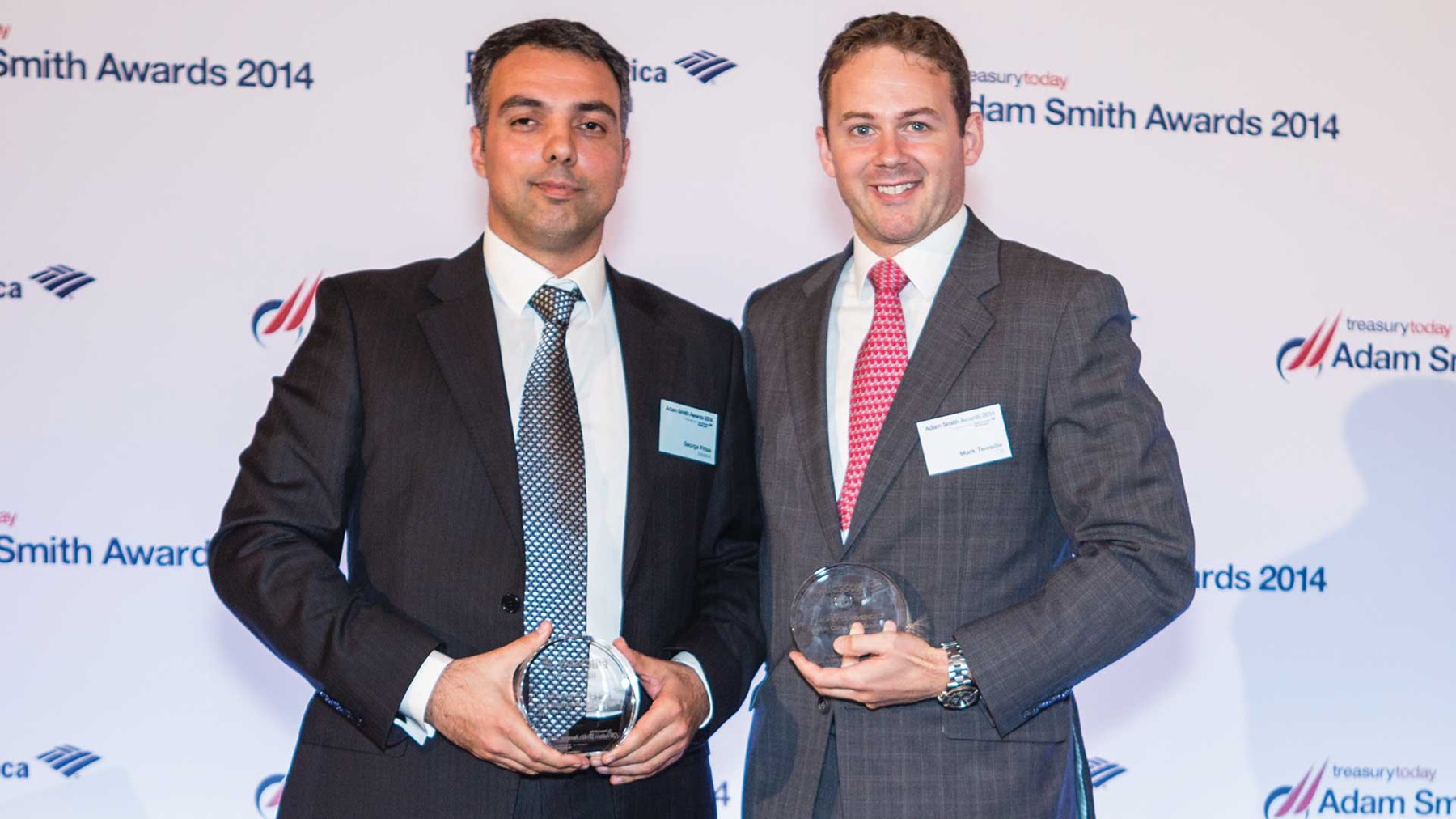
Photo of George Pittas of Ericsson collecting the Award on behalf of Ragnar Lodén and Mark Tweedie of Citi.
Benchmarking, including its bank’s Treasury Diagnostics module, a comprehensive analysis that evaluates treasury practices, has been an important tool in enabling Ericsson to achieve its objectives and realise the benefits of its treasury transformation programme. Following a series of benchmarking exercises, a number of key performance indicators (KPIs) were established.
Ragnar Lodén
Head of Corporate Finance

Founded in 1876, Ericsson (Telefonaktiebolaget LM Ericsson) is a Swedish multinational provider of communications technology and services. The company is headquartered in Stockholm, Sweden and looks to use innovation to empower people, business and society.
in partnership with

The challenge
Following the telecoms industry crisis in the early 2000s, Ericsson began a major restructuring that transformed the strategic and operational nature of the company. To ensure that it could meet the business’ changing requirements, it was essential that the treasury underwent a similar transformation. The goals of the treasury were wide-ranging but centred on consolidating and centralising its treasury functions in Stockholm.
The solution
Given the scale and reach of Ericsson, the transformation of the treasury was carried out as a decade-long project.
In restructuring, Ericsson created a Finance Transformation Programme with multiple streams, including treasury and banking. The treasury and banking stream analysed Ericsson’s existing structures and undertook a number of major projects as part of Ericsson’s transformation. Chief among these were the adoption of SAP globally (with shared master data), the creation of a host-to-host based automatic banking solution for payments, a centralised approach to bank account management, a reduction in banking partners, and the centralisation and standardisation of all payment-related functions to a single shared service centre (SSC).
“Ericsson also wanted to reorganise its treasury structure and analysed its existing competencies to assess where positions needed to be added or removed. More generally, roles such as process management became specialised and global in nature to reflect Ericsson’s new centralised treasury and ensure consistency and streamlined decision-making,” explains Ragnar Lodén, Head of Corporate Finance.
Following a series of benchmarking exercises, a framework of key performance indicators (KPIs) was established in several different areas. On the payments side, Ericsson put in place means of measuring of the total number of payments across the group, the number of automated payments, and the number of manual payments. It also established KPIs to monitor its cash management, including the cash balances for all its entities, bank charges, and the number of bank accounts.
Best practice and innovation
After a decade of carefully managed change and investment, Ericsson has achieved its objectives, which have stood the test of time despite a macro-economic and business climate that has changed beyond recognition. The ten-year Finance Transformation Project has enabled a centralised treasury structure that can meet the changing needs of the business.
Benchmarking, including Citi Treasury Diagnostics, a comprehensive analysis that evaluates treasury practices, has been an important tool in enabling Ericsson to achieve its objectives and realise the benefits of its treasury transformation.
Ericsson is clearly in good company with its benchmarking processes given the number of treasurers using KPIs, as demonstrated by the many responses to the KPI module in Treasury Today’s corporate treasury benchmarking studies.
“There is always something to learn and it is very useful to follow up initiatives one is driving yearly through KPIs and benchmarking. We have measured efficiency for some time, such as automation and the number of bank accounts. Furthermore, we are increasingly measuring quality and compliance which means that activities outside the finance organisation are also now relevant for us to measure,” concludes Loden.
Key benefits
- While the exact figures have not been disclosed, Ericsson has reached an extremely high degree of automation, reducing its number of manual payments to a minimum by more than half.
- Ericsson now has a global finance organisation with a culture of transparency and consistency that is applied across all aspects of its operations, including interaction with its banks and other internal and external stakeholders. In addition to sizeable efficiency savings, Ericsson’s finance transformation – aided by benchmarking – has smoothed the path of the company from a compliance perspective as it grows in more complex and regulated markets.
- Specifically, post-implementation benchmarking in 2013 revealed the effectiveness and robustness of Ericsson’s new streamlined structure in meeting regulatory challenges such as Sarbanes-Oxley, the Single Euro Payment Area (SEPA) and a series of national regulatory changes.
- Ericsson has worked with Citi to analyse the results of the company’s treasury diagnostics benchmarking to ensure that further potential efficiencies are identified and acted on, especially in relation to regulated markets where Ericsson conducts an increasing proportion of its business.